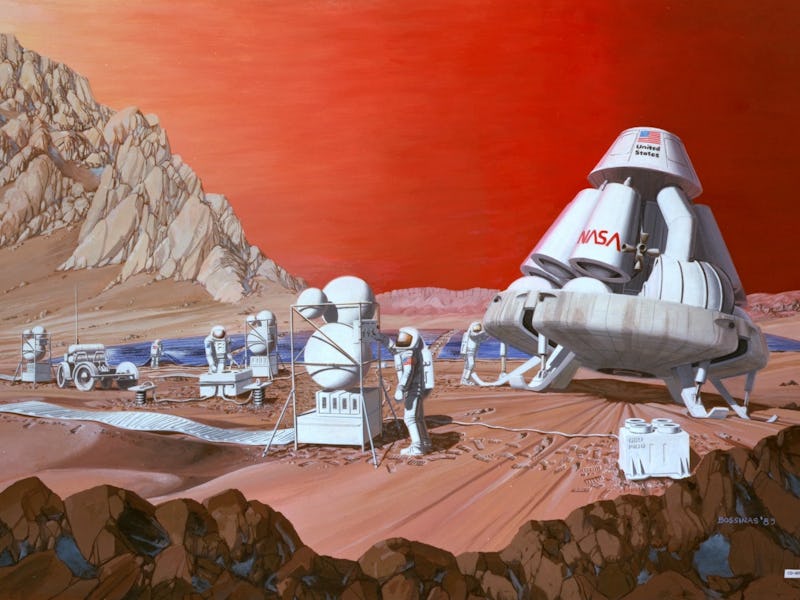NASA Kicks Off Martian Colony Planning Workshop Style
“I’m absolutely convinced we could live there."

On Tuesday, NASA launched the first day of their First Landing Site/Exploration Zone Workshop for Human Missions to the Surface of Mars. The workshop will contain presentations on 45 potential Martian landing sites for human explorers. The first day of the event was more or less like the first day of a college course: The head honchos ran through a syllabus that detailed what the rest of the weeks’ schedule would be, overall goals were defined, and there was an impassioned keynote address about the importance of the work. It was inspiring stuff. And inspiring with purpose: NASA wants to send humans to Mars and they need help from researchers and scientists all around the world.
Ellen Ochoa, director of NASA’s Johnson Space Center, put it best when she said that “while a human landing on Mars is still a while off,” the focus of the workshop is to learn where and how we can land on the red planet when the time comes. It’s important to understand how crews can and will behave and that will require an extensive amount of research, analysis, testing, and reassessment as we come closer to finally sending astronauts to Mars.
The workshop was specifically concerned with what NASA calls “Exploration Zones,” or EZs. You can’t simply direct people to land on any part of the Martian surface — it needs to be a safe, habitable zone where astronauts can build a sustainable living quarters, conduct research, and have the opportunity to explore and study features of Mars the rest of us back on Earth are dying to know.
Part of the reason NASA is taking a lot of time to deliberate on potential EZs is because the agency doesn’t simply want to do what they did for the Apollo missions — land humans, have them stroll around for a few hours, collect some rocks, and come home.
Instead, when astronauts finally land on Mars, NASA wants them to hit the ground running in setting up a permanent outpost, as their recent 35-page plan outlines. The whole process of getting to Mars is divided into three parts, but as officials stated at the workshop, they are most concerned with the last: ‘Earth Independent,’ where the agency will finally have a self-reliant colony able to sustain human life for the long term.
This includes the ability to make propellant through the atmosphere and Martian water (by splitting carbon dioxide for oxygen, and water for hydrogen, to help power a methane-hydrogen engine on the surface vehicles); agricultural systems to provide an endless supply of food; acquiring natural materials for construction and repair; and so much more.
Artist's conception of a rendezvous with an orbiter.
John Grunsfeld, associate administrator of NASA’s Science Mission Directorate, argues that the more research NASA scientists have been able to conduct, the more they’ve found that Mars indeed has the resources humans might need to survive. There’s water; there’s nitrogen; there’s humidity (especially during the night), and probably many other resources we can use. “I’m absolutely convinced we could live there,” he said.
Overall, deciding on EZs now will make it much easier for us to make sure humans can achieve their scientific goals as well. “The more you can live off the land, the more achievable this is,” says Ben Bussey, the chief scientist for NASA’s Human Exploration & Operations Mission Directorate.
It’s amazing to think that we’ve even started to have these discussions. Grunsfeld recounted that just a few years ago, NASA officials were not really permitted to talk about the notion of humans reaching Mars or landing on the Martian surface. That’s no longer the case. Paraphrasing current NASA administrator Charlie Bolden, Grunsfeld told the audience, “we’re closer to Mars than we’ve ever been. There’s no question in my mind we have the capability.”